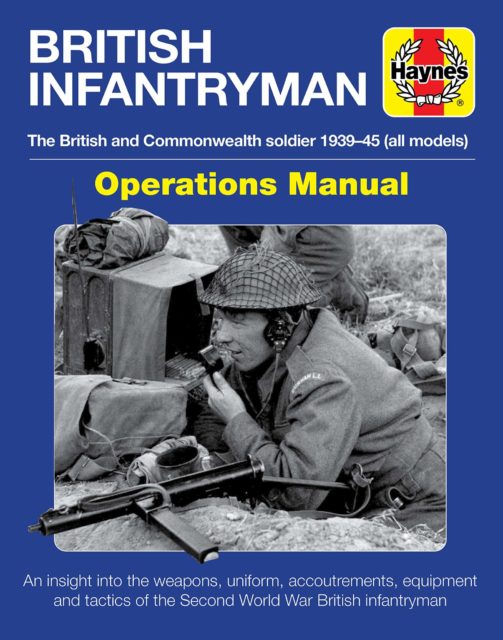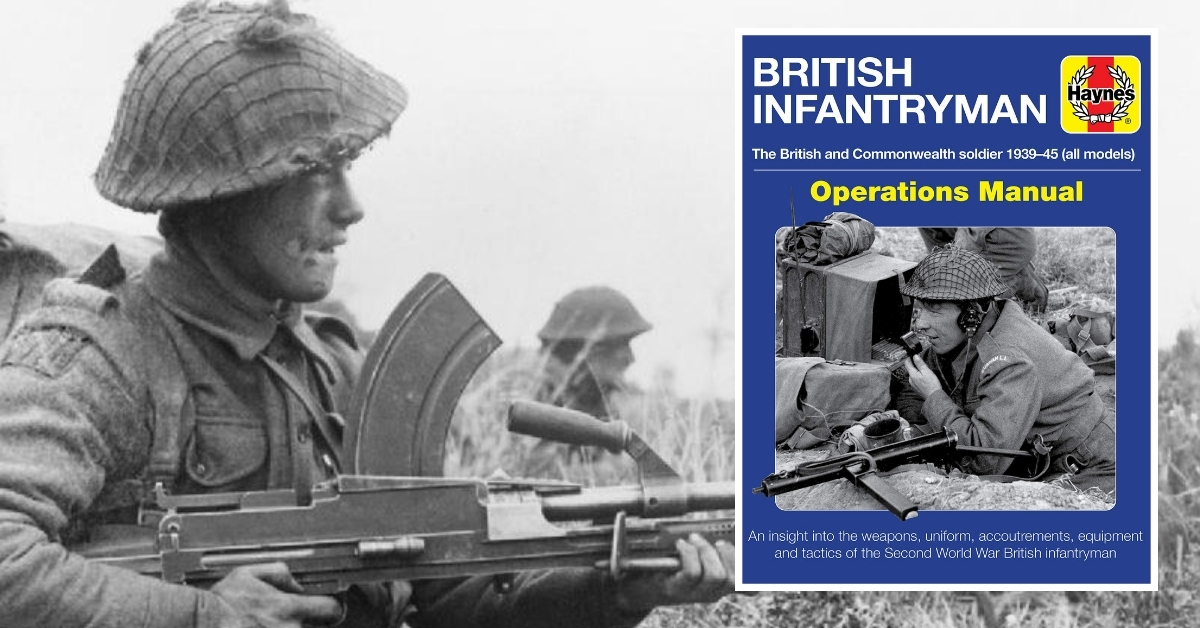Haynes is this month commemorating the British and Commonwealth soldiers who fought in the Second World War by releasing the British Infantryman Operations Manual.
The manual, which also coincides with 2020 marking the 75th anniversary of the end of the Second World War, provides an insight into the weapons, uniform, accoutrements, equipment and tactics of British and Commonwealth soldiers who valiantly fought against Axis armies between 1939 and 1945.
Author Simon Forty explores in detail how British and Commonwealth infantry were organised, their training and life in the field. He also looks at uniforms and equipment, weapons, transport and communication, medical services, and finally how the fallen are commemorated.
The British Infantryman Operations Manual explains how the British footsloggers and the other nationalities who served alongside them – Africans, Australians, Canadians, Indians, New Zealanders, Poles, French and many others – proved themselves as good as any opposition.
The book also features a poignant and timely chapter looking at how those soldiers who paid the ultimate price are commemorated. It highlights that the Commonwealth War Graves Commission (CWGC) was set up after the First World War to ensure that all should be commemorated equally. Recently it has taken steps to rectify the mistakes of the past that allowed many of the burials of colonial troops to go unrecorded. As a result, there are now over 23,000 CWGC sites around the world.
Talking about the role that infantrymen had to play, Simon says: “The British and Commonwealth infantrymen of the Second World War, with their old-fashioned helmets, spring triggered PIAT anti-tank weapons and veneration of heroic defeats, may have lost the propaganda war – to be fair the cut of a British Army battledress blouse probably did that on Day One – but their record speaks for itself: they may have started badly in France in 1940 and the Far East in 1942, but they were victorious in the North African desert, in Europe and in India and Burma where the ‘Forgotten Army’ first held the Japanese and then inflicted at Imphal and Kohima their greatest loss at the time on land.
Simon continues: “They held back the might of the Panzers in Normandy in 1944, chased the Germans into Holland and came within a whisker at Arnhem of circumventing the Siegfried Line, and won battle after battle against a fanatical defence on their way to final victory on the coast of the Baltic Sea. British air-land cooperation in the desert formed the basis for future Allied tactical air operations; the Commandos were the blueprint for post-war special forces; the Parachute Regiment an elite unit second to none; and British artillery was probably the best in the world in 1945.”

“This book pays tribute to recent research by modern writers and academics such as Jonathan Fennell, Stephen Badsley, John Buckley, Terry Copp and Stephen Hart who have done so much to balance the lazy views expressed about the British and Commonwealth infantryman and their capabilities in the past.”
The manual is packed with 230 archive and contemporary photographs and illustrations to further bring the story of the British Infantryman to life. It also features over 100 badges and insignia.
Another Article From Us: Divers Believe They Have Located the WWII Wreck of the USS Grenadier
The British Infantryman Operations Manual joins the ranks of other Haynes titles which include the Great War British Tommy and Germany Infantryman.
